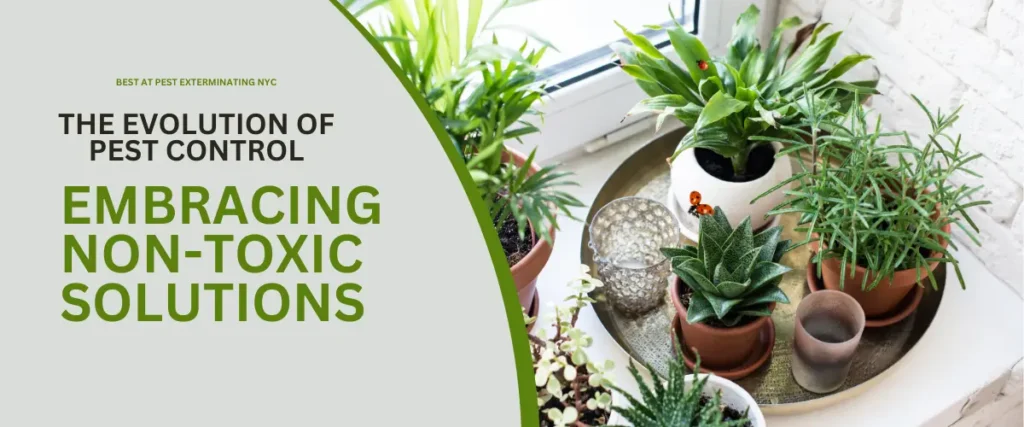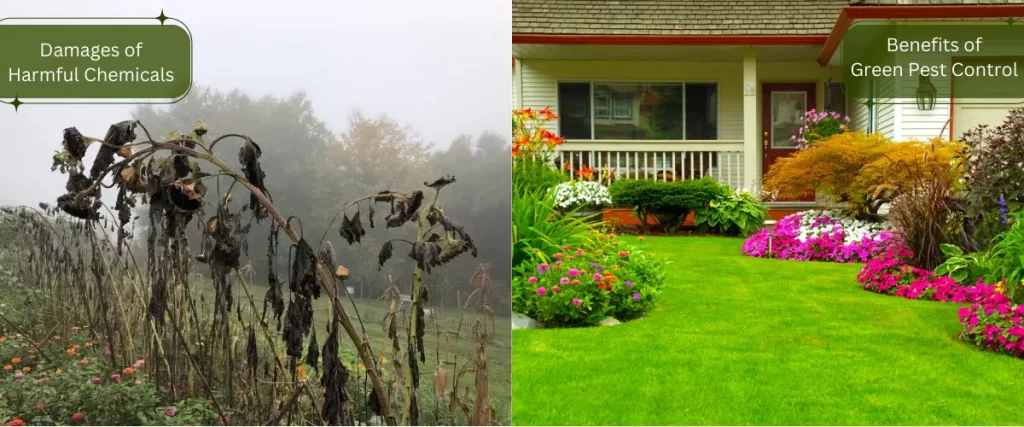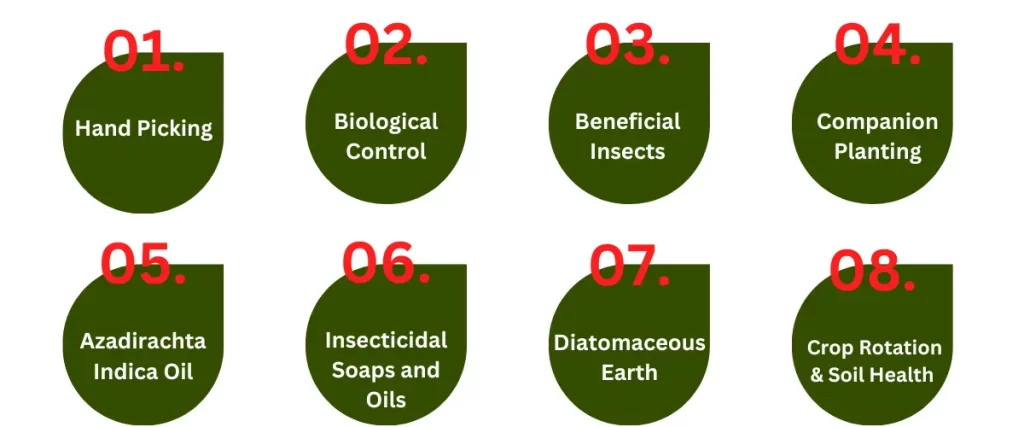
Embracing Non-Toxic Green Pest Control Solutions
In recent years, the field of pest control has undergone a significant evolution, shifting towards non-toxic and eco-friendly solutions. This paradigm shift reflects a growing awareness of the adverse effects of traditional pesticides on both the environment and human health. As we continue to prioritize sustainability and environmental stewardship, the demand for green pest control services is expected to rise.
Transitioning to Eco-Friendly Practices
The transition to eco-friendly pest control practices requires a multifaceted approach. This includes:
Education and Awareness:
Increasing public awareness about the benefits of green pest control is crucial. By educating consumers about the environmental and health risks associated with traditional pesticides, we can empower them to make informed choices.
Regulatory Support:
Government agencies play a vital role in promoting the use of eco-friendly pest control methods. By implementing regulations that encourage the adoption of non-toxic alternatives, policymakers can drive industry-wide change.
Research and Innovation:
Investing in research and development is essential for advancing the field of green pest control. By exploring new technologies and methods, we can improve the efficacy and accessibility of eco-friendly pest management solutions.
Understanding Green Pest Control
Green pest control, also known as eco-friendly or organic pest control, focuses on using methods and products that are safe for the environment, humans, and pets. Unlike traditional pest control methods that rely heavily on chemical pesticides, green pest control utilizes natural and non-toxic alternatives to manage pest populations.
Benefits of Green Pest Control

1. Environmental Safety
One of the primary benefits of green pest control is its minimal impact on the environment. By using natural products and methods, green pest control helps preserve biodiversity and protect ecosystems from the harmful effects of chemical pesticides.
2. Healthier Living Spaces
Traditional pesticides can pose serious health risks to humans and pets, especially with prolonged exposure. Green pest control eliminates these risks by using non-toxic solutions, making your living or working environment safer and healthier for everyone.
3. Sustainable Solutions
Green pest control emphasizes long-term solutions that address the root causes of pest infestations. By focusing on prevention and sustainable practices, such as habitat modification and biological control, green pest control offers effective and lasting results without relying on harmful chemicals.
Implementing Green Pest Control Strategies
1. Green Tree Pest Control
For homeowners and arborists looking to protect their trees from pests without harming the environment, green tree pest control offers a natural solution. Methods such as pruning, tree banding, and the introduction of beneficial insects can effectively manage pest populations while preserving the health of your trees.
2. Pest Control for Trees
Whether you’re dealing with aphids, borers, or other tree-damaging pests, eco-friendly pest control methods can help safeguard your trees. Utilizing techniques like integrated pest management (IPM) and organic sprays, pest control for trees focuses on minimizing harm to the environment while effectively controlling pests.
3. Green Pest Control in NYC
In urban environments like New York City, green pest control is gaining popularity as residents seek safer alternatives to traditional pest control methods. With options such as non-toxic insect control and biocontrol pest management, NYC residents can keep their homes and businesses pest-free without compromising environmental or public health.
4. Organic Pest Control in NYC
Organic pest control methods are becoming increasingly popular in NYC, where environmental concerns are paramount. From eco-friendly repellents to botanical insecticides, organic pest control offers effective solutions for managing pests in residential and commercial settings while promoting sustainability and safety.
Key principles of green pest management:
Prevention:
Emphasizing prevention techniques such as sealing cracks and crevices, removing sources of food and water, and maintaining a clean environment to reduce pest access and survival.
Monitoring:
Regularly inspecting for pests to detect problems early and accurately identify the type of pest infestation.
Non-chemical control methods:
Using mechanical, physical, or biological control methods to manage pests, such as traps, barriers, beneficial insects, and habitat modifications.
Least-toxic chemical control:
If chemical control is necessary, using the least toxic products available and applying them in targeted areas to minimize exposure to people, pets, and beneficial organisms.
Organic Pest Control Methods:

Organic pest control involves using natural methods to manage and eliminate pests without relying on synthetic chemicals. This approach is favored by many gardeners and farmers who are concerned about the potential negative impact of chemical pesticides on the environment, beneficial insects, and human health. Here are some common organic pest control methods:
Hand picking:
This involves physically removing pests from plants by hand. It is effective for larger pests like caterpillars, beetles, and slugs.
Biological control:
This method involves using natural predators, parasites, or pathogens to control pest populations. For example, introducing ladybugs to control aphids or using nematodes to target specific pests in the soil.
Beneficial insects:
Attracting or releasing insects that feed on pests can help keep pest populations in check. Ladybugs, lacewings, and parasitic wasps are examples of beneficial insects.
Companion planting:
Planting certain species of plants together can help repel pests or attract beneficial insects. For example, planting marigolds can help repel nematodes, while planting basil near tomatoes can improve their growth and flavor.
Azadirachta Indica oil:
Azadirachta Indica oil is a natural insecticide derived from the Azadirachta Indica tree. It is effective against a wide range of pests and is considered safe for beneficial insects.
Insecticidal soaps and oils:
These products are made from natural ingredients and can be used to control soft-bodied insects like aphids, spider mites, and whiteflies.
Diatomaceous earth:
This powdery substance is made from fossilized remains of diatoms and can be used to control pests like ants, slugs, and beetles by disrupting their outer protective layer.
Crop rotation and soil health:
Practicing crop rotation and maintaining healthy soil can help reduce pest populations by disrupting their life cycles and promoting plant health.
It’s important to note that while organic pest control methods are generally safer and more environmentally friendly than chemical pesticides, they may require more frequent applications and monitoring to be effective. Integrated pest management (IPM), which combines organic and conventional pest control methods, can also be a practical approach for managing pests sustainably.
The Future of Pest Control
Looking ahead, the future of pest control lies in sustainable, holistic approaches that prioritize environmental health and safety. By embracing green pest control practices, we can protect our homes, businesses, and communities from pests while safeguarding the planet for future generations. Together, we can create a healthier, more sustainable world for all.


